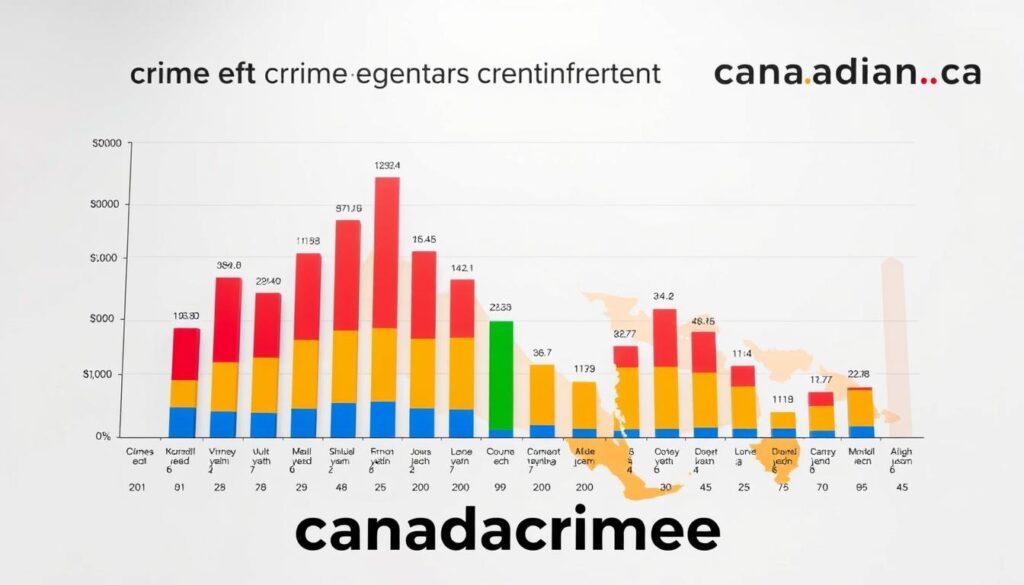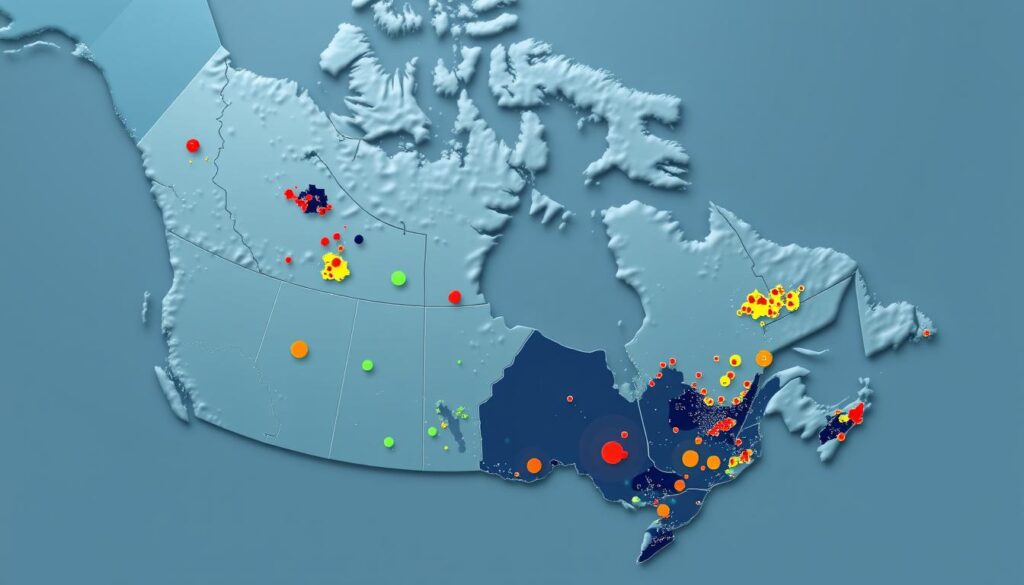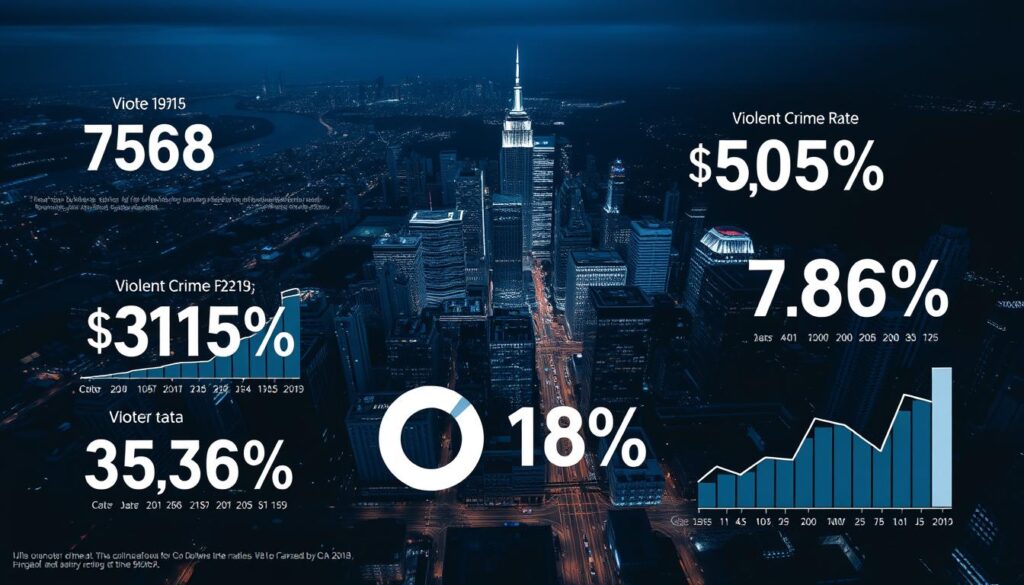Canada has witnessed a significant shift in its crime trends over the past few decades. According to Statistics Canada, the overall crime rate had been declining steadily since the late 1990s, as measured by the Crime Severity Index (CSI) and the Violent Crime Severity Index (VCSI).
However, recent data indicates a reversal of this trend, with the CSI rising by 2% in 2023, marking the third consecutive year of increase. This shift has sparked interest in understanding the current state of crime statistics in Canada.
Our comprehensive analysis will delve into the historical trends and current landscape of crime information across Canada, examining regional variations, specific crime categories, and international comparisons to provide a nuanced understanding of the nation’s safety landscape.
Current State of Canadian Crime Rate
Recent data on Canadian crime rates reveals a multifaceted picture of the country’s safety. The Crime Severity Index (CSI), a measure that takes into account the volume and severity of crime, rose by 2% in 2023, marking the third consecutive year of increase. This upward trend, which began in 2015, is primarily driven by significant shifts in certain types of crime.

Crime Severity Index Overview
The Crime Severity Index is a critical tool for understanding the nature of crime in Canada. In 2023, the overall CSI increase was largely influenced by a rise in reported fraud, extortion, and child pornography cases, which surged by 52%. The police-reported crime rate per 100,000 population was 5,843, reflecting a 2.5% annual change. This indicates a continuing reversal of the long-term declining trend observed since the 1990s.
Recent Trends in Violent and Non-Violent Crime
Breaking down the crime statistics further, the Violent Crime Severity Index remained relatively stable at 99.5, while the Non-violent Crime Severity Index rose to 73.5. This suggests that property crimes and other non-violent offenses are driving much of the recent increase in the CSI. Significant contributors include fraud (up 12%), extortion (up 35%), and child pornography cases. In contrast, traditional crime categories like breaking and entering continued their long-term decline, dropping by 5% in 2023.
Understanding these nuanced trends is essential for developing targeted crime prevention strategies that address emerging threats while maintaining progress in reducing traditional forms of crime.
Historical Crime Trends in Canada
Historical crime trends in Canada reveal significant shifts in public safety. Understanding these trends is crucial for developing effective crime prevention strategies.
Long-term Crime Rate Patterns Since 1990s
Canada’s crime rates have generally followed a downward trajectory since the early 1990s. The homicide rate peaked in 1975 at 3.03 per 100,000 population and declined thereafter. According to data, the average murder rate between 1970 and 1976 was 2.52 per 100,000 population, decreasing to 1.82 between 1998 and 2004. This long-term decline reflects broader societal changes, including demographic shifts and improved economic conditions.
For more detailed information on crime statistics, refer to the report by Public Safety Canada on crime trends.

Impact of the COVID-19 Pandemic on Crime Statistics
The COVID-19 pandemic created unprecedented disruptions in crime patterns. Initial lockdowns led to sharp decreases in many crime categories, followed by increases in domestic violence and cybercrime. Despite recent increases in youth crime from 2022 to 2023, the youth crime rate remains lower than pre-pandemic levels, with a rate of 2,898 per 100,000 youth population in 2023 compared to 3,213 in 2019.
| Year | Homicide Rate per 100,000 | Youth Crime Rate per 100,000 |
|---|---|---|
| 1975 | 3.03 | N/A |
| 2019 | N/A | 3,213 |
| 2023 | N/A | 2,898 |
Regional Variations in Canadian Crime
Canada’s diverse regions experience crime at varying levels, shaped by local conditions and challenges. Understanding these regional differences is crucial for developing effective crime prevention strategies.
Provincial Crime Rate Comparisons
The crime rate varies significantly across Canadian provinces. Manitoba and Saskatchewan consistently report the highest violent crime rates among the provinces. In contrast, provinces like Prince Edward Island and Nova Scotia have generally lower crime rates, although recent data indicates a rise in crime in these areas. For instance, Newfoundland and Labrador saw a 5.1% increase in its Crime Severity Index in 2023, with a police-reported crime rate of 7,175 per 100,000 population.
| Province | Crime Severity Index (2023) | Police-Reported Crime Rate per 100,000 |
|---|---|---|
| Newfoundland and Labrador | 86.3 | 7,175 |
| Prince Edward Island | Increasing | Rising |
| Nova Scotia | Slight decrease | Moderate |
Urban vs. Rural Crime Patterns
Urban and rural areas in Canada exhibit different crime patterns. Urban centers tend to experience higher rates of robbery and theft, while rural areas face challenges related to property crimes and longer police response times. The territories, including the Northwest Territories, report crime rates significantly higher than the national average, often up to ten times higher, due to factors like remoteness and socioeconomic challenges.

As noted by a recent report, “Understanding these regional variations is crucial for developing targeted crime prevention strategies that address the specific needs and challenges of different Canadian communities rather than applying one-size-fits-all approaches.”
“The crime landscape in Canada is complex, with significant regional disparities that require tailored responses to address effectively.”
By examining these regional variations and understanding the underlying factors, policymakers can develop more effective strategies to combat crime across Canada.
Analysis of Specific Crime Types
Understanding the nuances of crime in Canada requires a detailed analysis of specific crime types. This examination not only sheds light on the trends and patterns within different categories of crime but also helps in devising targeted strategies for crime prevention and intervention.
Violent Crime Statistics
Violent crime in Canada exhibited mixed trends in 2023. Notably, there were 778 victims of homicide, a decrease of 104 from the previous year. However, gang-related homicides continued to be a significant concern, accounting for about 22% of all homicides, with 78% of these incidents involving firearms, predominantly handguns. The data also highlights a disturbing trend in gender-based violence, with women being approximately five times more likely than men to be killed by a spouse or intimate partner.

Property Crime Trends
Property crimes in Canada are evolving, with some traditional offenses declining while others are on the rise. For instance, breaking and entering decreased by 5% in 2023, whereas motor vehicle theft saw a 5% increase. Despite this rise, motor vehicle theft rates remain about 50% lower than they were 25 years ago. Fraud has emerged as a rapidly growing crime category, with a 46% increase between 2008 and 2018, and a further 12% rise in 2023, reflecting the growing sophistication of financial crimes and online scams.
Emerging Crime Concerns
The crime landscape in Canada is also being shaped by emerging concerns such as hate crimes and cybercrime. In 2023, hate crimes saw a significant increase of 32%, reaching 4,777 reported incidents, with the majority targeting religious groups and sexual orientation. Additionally, there was a 52% surge in child pornography cases, attributed to enhanced awareness and improved collaboration among law enforcement agencies. Cybercrime continues to be a significant threat, with many incidents going unreported, suggesting that actual rates may be substantially higher than official figures.
Youth Crime in Canada
Recent statistics indicate a concerning increase in youth crime across Canada, deviating from the previous downward trend. From 2022 to 2023, the youth crime rate increased by 13%, rising from 2,571 to 2,898 per 100,000 youth population. This marks the second consecutive yearly increase, following a 19% rise in 2022.
Current Youth Crime Statistics
The youth crime rate has seen a significant shift, with the rate per 100,000 youth population increasing to 2,898 in 2023. According to Statistics Canada, the Youth Crime Severity Index (CSI) also increased by 7% in 2023, reaching 53.74. This indicates that both the volume and severity of youth crime are rising. The increase in youth crime was driven by rises in violent crimes (+10%), property crimes (+13%), and other Criminal Code offenses (+20%).

Youth Criminal Justice System Impact
The implementation of the Youth Criminal Justice Act (YCJA) in 2003 coincided with a long-term decline in youth crime rates, demonstrating the potential effectiveness of justice reforms focused on rehabilitation rather than punishment. However, recent increases suggest that ongoing evaluation and adaptation of the justice system are necessary. Provincial variations in youth crime are significant, with jurisdictions like Prince Edward Island (+100%), Yukon (+51%), and Newfoundland and Labrador (+21%) experiencing the largest increases in 2023.
Understanding these trends is crucial for developing effective strategies to address youth crime and ensure that the justice system is equipped to handle the evolving needs of the youth population.
International Comparisons of Canadian Crime Rate
Comparing Canada’s crime rate to other countries offers a broader understanding of its safety and security. When evaluating crime statistics, it’s essential to consider both the trends within Canada and how they compare internationally.
Canada vs. United States Crime Statistics
A comparative analysis between Canada and the United States reveals some interesting trends. From 2014 to 2022, Canada’s violent crime rate rose by 43.8% to 434.1 per 100,000 population, while the U.S. saw a more modest increase of 5.3% to 380.7 per 100,000. However, the homicide rate in the U.S. remains significantly higher at 5.8 per 100,000, compared to Canada’s 2.3 per 100,000.
Property crime statistics also show a divergence, with Canada experiencing a 7.0% increase in property crimes to 2,491 per 100,000 people, while the U.S. saw a decline of 24.1% during the same period. Historically, Canada has maintained lower rates of violent crime compared to the U.S., with the latter having 65% higher robbery rates, double the aggravated assault rates, and triple the murder rates in 2000.

Global Ranking and Comparisons
Canada is ranked the 11th safest country out of 163 nations according to the Institute for Economics & Peace Global Peace Index. This ranking places Canada among the most secure developed nations globally. While Canada’s crime rates compare favorably with many developed nations, they are higher than some European countries, particularly in property crimes.
It’s crucial to interpret international crime statistics cautiously due to differences in legal definitions, reporting practices, and justice systems. Nonetheless, homicide rates are generally considered reliable for cross-national comparisons, highlighting Canada’s relatively low rate compared to many countries, including the United States.
Conclusion: Understanding and Preventing Crime in Canada
The Canadian crime landscape is complex, requiring a multifaceted approach to understand and address its various trends and statistics. Understanding Canada’s crime situation involves analyzing both the Crime Severity Index and traditional crime rates per 100,000 population.
Regional variations in crime rates are significant, with provinces like Manitoba and Saskatchewan experiencing higher crime rates compared to Prince Edward Island and other Atlantic provinces. The Canadian criminal justice system continues to evolve, with the Youth Criminal Justice Act demonstrating the positive impact of legislative reforms on crime rates.
Preventing crime in Canada requires addressing root causes such as poverty, substance abuse, and social marginalization. Emerging crime concerns like cybercrime, fraud, and vehicle theft necessitate new prevention strategies and public awareness campaigns. Ongoing data collection and analysis by Statistics Canada are crucial for identifying emerging trends and evaluating crime prevention strategies.
Future crime prevention efforts must balance traditional policing with community-based initiatives and social programs addressing underlying factors contributing to criminal behavior. By adopting a comprehensive approach, Canada can work towards reducing crime and improving public safety.

